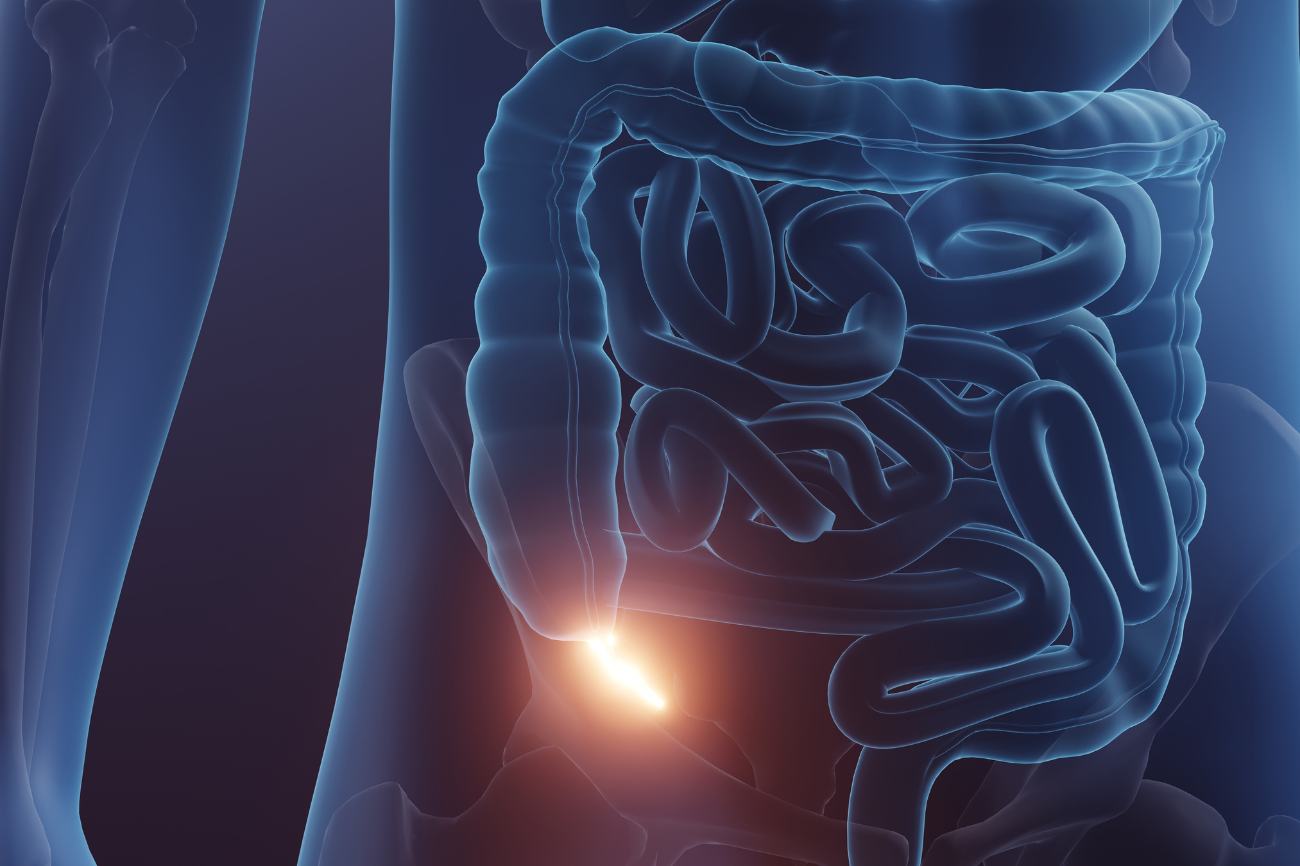
Most of us are familiar with the appendix, that worm-shaped tube at the beginning of the large intestine, even if we can’t remember which side of the abdomen it’s on. (Hint: This is not the left side.)
It’s easy to forget that the four-inch-long organ is even there—until it becomes inflamed or bursts, that is. More than 1 in 20 Americans will develop a case of appendicitis at some point, according to the National Institutes of Healthwhich can sometimes lead to serious and even fatal complications.
If you don’t like the sound of those odds, you might also wonder why we’re burdened with ticking time bombs in the first place. Is there really an evolutionary benefit to them hiding in our bellies? Read on to find out.
Good gut bacteria
You might be surprised to learn that the appendix isn’t just in the realm of humans. A handful of other animals—including great apes and other primates, but also opossums, wombats, and rabbits—have similar structures.
In fact, according to a remarkable study published in 2013, the appendix has evolved in different animals at least 32 times in history and de-evolved only seven times. It clearly has some value. Scientists just can’t agree on what that value is.
One theory put forth by the same researchers behind the 2013 study is that the human appendix serves as a reservoir of beneficial gut bacteria. Species with appendices, they say, also seem to have high concentrations of lymphoid tissue at the beginning of the large intestine — called the cecum — which is right next to the appendix.
This tissue, also called immune tissue, may play a role in the immune system. But we know it also promotes the growth of healthy gut bacteria; keeping an extra supply of this bacteria in the adjacent appendix can be useful, say, when you’re rebooting the entire digestive system after an intestinal illness.
Read more: The role of gut bacteria in anxiety and depression
Original app feature
Of course, other researchers (incl Charles Darwin, the “father of evolution” himself) argue that the appendix is simply a thing of the past. They call it a rudimentary organ: a useless residue discarded during evolution, similar to human coccyx or wisdom teeth.
Modern herbivorous vertebrates, such as horses, have fairly large cecums; it is believed that they aid in the digestion of hard plant material such as tree bark and that the appendix acts as an extension of this organ.
As the diets of our ancient ancestors evolved to include more easily digestible foods, they no longer needed the extra help that the appendix theoretically provided.
Nowadays approx 1 in 100,000 people are born without an appendix at all – and some scientists believe that after enough time the organ will disappear from the human body forever. If that seems a little hard to imagine, consider that we’ve been removing appendices for over a century with no apparent health problems.
Read more: How do people still evolve?
What is appendicitis?
You’ve probably heard the horror stories of what appendicitis feels like: severe abdominal pain, vomiting, diarrhea, fever, and bloating. But what makes an incognito app go rogue?
Most often abdominal infection or some blockage in the opening of the organ is guilty. Any of these things can cause the bacteria inside to multiply quickly – eventually the appendix swells with pus.
Left untreated, the pressure inside will continue to build and build and build until (you guessed it) it has no choice but to fall apart. This can happen as soon as 48 to 72 hours after symptoms appear.
At this point, even with medical treatment, countless complications can occur. When the appendix bursts, its contents spill all over the abdomen – bringing a nasty infection with it. This condition is called peritonitis and can be life-threatening, especially if it progresses to sepsis.
What is an appendectomy?
Regardless of what stage you are at, however, an appendectomy is the best and only effective treatment for appendicitis. According to the Cleveland Clinic, 300,000 appendectomies are performed each year in USA
In this procedure, a surgeon either removes the malfunctioning organ through one large incision in the abdomen (the standard method) or through a smaller incision using a small video camera. Either way, the risk of complications is extremely low—and the benefits may extend to more than gut health.
Read more: Removing the appendix significantly reduces the risk of Parkinson’s disease

